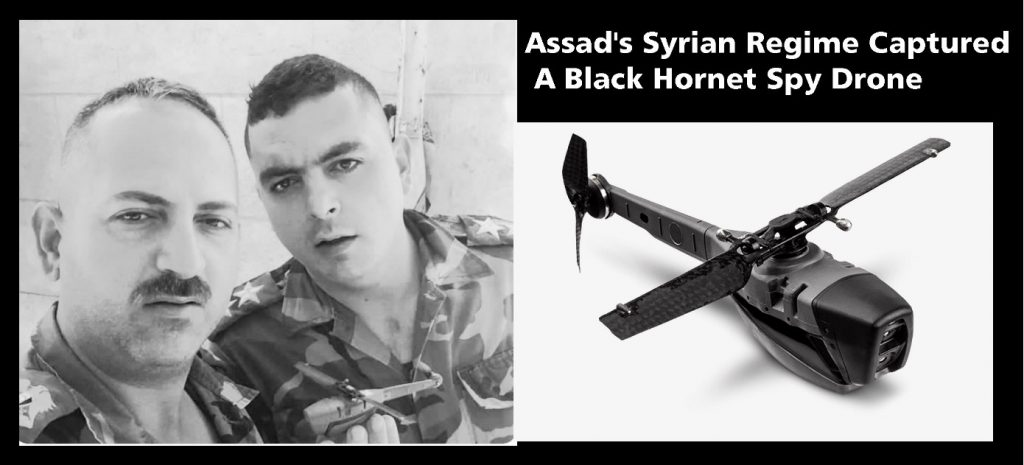
In July 19, 2020, a photograph first emerged online on Pro-regime social accounts claimed that Syrian troops recovered the Black Hornet near the town of Tal Tamr in the country’s northeastern Al Hasakah Governorate, which borders Turkey to the north and Iraq to the south.


The Black Hornet 3, currently developed and made by FLIR Systems, spans an impressively small seven inches long and weighs only a tenth of a pound. The drone is controlled by its controller using a tablet-like touchscreen device and a hand-held controller.

The drone can be sent to a specific location using a GPS-enabled navigation system, or it can be flown within the controller’s line of sight. In the GPS mode, the drone can capture images along its route at set points, and then automatically return to its base.
It may look small but it’s packed full of useful contraptions. For instance, it dons two full-motion daytime video cameras and a thermal imager. For nighttime flights, all three cameras work together to give a single higher-fidelity view.
The palm sized Prox Dynamics’ PD-100 Black Hornet only weighs in at 16 grams. With a flight time of nearly a half an hour, it can venture out both vertically and horizontally, into villages and buildings, to provide real time intelligence via streaming video from any of its three cameras. Because of its quiet electronic motors and small size, the little spy drone is almost completely undetectable.
“The equipment is getting smaller and the reason it’s getting smaller is so the Soldier can be equipped with this,” Sunny Koshal, the chief of the Soldier Support Branch at RIA-JMTC said in an official interview in January 2019. “This thing, you can really pocket it and just carry it.”
The latest Black Hornet 3, which FLIR Systems also calls the Personal Reconnaissance System (PRS), weighs less than a tenth of a pound and is just under seven inches long. The complete system comes with a docking station for two drones that keeps them protected when not in use, as well as a hand-held touchscreen device and a controller.
During nighttime operations, the drone fuses the feeds from both its electro-optical the thermal imaging system to create higher fidelity imagery. This makes it easier for the operator to positively identify individuals as hostile, rather than just innocent bystanders, or otherwise examine other objects of interest in the dark.
Flir Systems says the drone is so small that it is almost impossible to see or hear even when close to what it is studying. The electric, twin-rotor drone can fly for 25 minutes, stay connected to an operator 1.2 miles away and travel at 21km/h in temperatures as high as 43C. It sends live video and high-definition images back to the operator, using a thermal imaging camera by night. The latest version sends information via an encrypted link approved by the US military.
The drones are controlled by an operator with a touchscreen display but can also follow a set route, returning as programmed or on demand.
The Black Hornet also uses its cameras and artificial intelligence to learn as it flies, building up a picture of obstacles, such as trees, that it should avoid or fly around. This helps it to determine its relative position when indoors, where a control signal may be blocked.
This captured drone will no doubt be cloned by Iran and China, perhaps even Russia.





